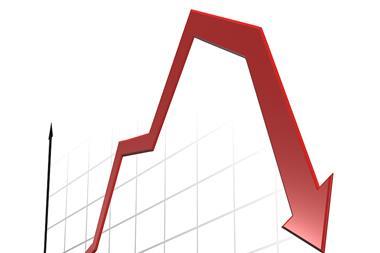… Inflation, that is. And with it comes escalating premiums, expensive claims, devalued investments and rising operating costs. But who is going to feel its grip the worst?
The spectre of price rises has been looming over the UK for some months. But with last week’s news that inflation jumped to 3.7% in December, from 3.3% the previous month, the phantom has morphed into flesh and blood reality.
And for insurers, it’s a particularly grisly reality. Rising inflation means that, on one hand, claims are costing them more than what they originally insured customers for; on the other, their investment portfolios are losing value.
Towers Watson consulting actuary Ryan Warren warns: “Inflation has been on the list of concerns for some insurers. However, many others have not appreciated the extent of the impact it will have on their business.”
The impact can, he says, be “devastating”. Here, we assess exactly how much havoc inflation will wreak and how dramatically it could change the way insurers operate.
Price hike
The biggest impact of higher inflation will be rising premiums. “People have no choice but to raise rates in all general insurance lines,” says AXA’s financial director of personal lines, Waseem Malik. “If we see inflation staying at around 3%-6%, then expect to see double-digit premium rises.”
Inflation has, of course, already topped 3% and is widely expected to hit 4% this year. Investec economist Philip Shaw says: “We have just seen inflation jump to 3.7% in December, and that was before the VAT rise [from 17.5% to 20%] had kicked in. Once that rise is factored in, even if retailers don’t pass it on fully to customers, we are likely to see inflation rise to 4% in January and we think it will average 3.9% for the year.”
He warns: “You can never rule out a more dramatic rise. If oil prices doubled, for example, we would see inflation going into double-digits.”
But even an average of 3.9% for 2011 is enough to shake up the industry, especially when added to the other factors nudging insurers to increase rates, including the prolonged soft market and the recent spate of weather events, such as December’s big freeze. Malik expects to see three areas affected above all.
“We’ll see motor going up again by similar levels to last year: around 20-30%,” he says. “Percentage rises in household will be at least in the mid-teens, but if insurers take the view that the recent freeze and floods mean catastrophes are becoming more frequent in the UK, it could be 20%. Commercial will see the most substantial rises, but it will happen over the next three or four years, starting with 5%-10% this year.”
Malik adds: “When many insurers announce their results in the coming weeks, we’ll know more about how much prices are going to rise, but I’m certain that few insurers are making profit.”
But the market is very transparent at present and, thanks to aggregators, competition is intense. Insurers also have capital to pump up capacity and depress prices. So, why are prices rising?
PricewaterhouseCoopers partner Paul Clarke explains the two-fold impact of rising inflation. “The first is retrospective, in that premiums gathered in previous years – when prices for cars, property, contents and so on were lower – will not be enough to cover claims. The second is that premiums will now need to reflect immediate inflation – what goods and services cost now – and forecast inflation: what they might cost in the near and medium term.”
Insurers are unlikely to be able to call on reserves to get out of this one. Malik says: “I would be shocked if anyone out there was still sitting on reserves. People have been relying on reserve releases to prop up their financial positions, so now many are holding realistic reserves for propping up claims, but with no extra on top. It means that the only way to survive high inflation is to put up prices.”
Ernst & Young insurance team director Tony Sault agrees: “For insurers with little left in their reserves, inflation will have quite a severe impact. They do tend to put a margin into their reserves to cover inflation rises, but the problem is that they have been releasing large amounts in recent years as the whole market has taken a hit. Already last year we saw companies having to release smaller amounts and put prices up.”
And a really dramatic rise in inflation will only twist the knife. Shore Capital analyst Eamonn Flanagan says: “If we see inflation rise to 10% or more, reserves will certainly be inadequate.”
Spread betting
The other side of the coin is that inflation will also hit insurers’ investments. Being heavily invested in bonds, insurers’ portfolios lose money if prices rise. This is because the returns from bonds, being fixed rather than increasing with inflation, will be worth less. And this is especially devastating if interest rates remain low, as it means poor returns on investment.
So how hard an insurer is hit will depend to an extent on its exposure to fixed income. The larger players with diverse businesses tend to have more diverse investment portfolios, as they are able to take more risk. So they might invest only 60%-70% of their portfolio in bonds. The rest of their portfolio is likely to be in equities, possibly with a sprinkling of other assets classes, such as property.
These classes, though riskier than fixed income, have more potential to make money in times of inflation, as their returns depend more directly on how the assets they are based on are actually performing. Smaller insurers, however, are more likely to be weighted towards bonds, so they will be worse off.
Adding a further twist to the nightmare, inflation will also push up insurers’ operating costs, as they need to pay more for staff and services. Meanwhile, customers will feel the pinch too. Ernst & Young insurance director Malcolm Kerr says this means they will shop around even more, further fuelling price competition between insurers.
Worse, he adds: “Since many see insurance as a discretionary purchase, the industry will find more customers fail to renew policies.” And expect to see another surge in fraudulent claims.
Lucky dip
Inflation will affect the various lines of insurance in different ways, with longer-tail business affected more severely. Flanagan says: “If you are running a liability book that is long-tailed, you’re more exposed to inflation rises, as your liabilities are more likely to increase over time. This means a firm like Beazley is more exposed than a firm such as Admiral, which is less vulnerable because it has a short-tail book of purely motor.”
The impact of increasing inflation will also vary depending on how goods and services relevant to particular lines are being affected. Sault says that property damage claims may not take quite such a hit. “With the construction industry being so flat, even if prices go up more widely they probably won’t for builders’ services.”
Motor, meanwhile, is likely to be more strongly affected. “Paint is expensive, because it is oil-based, so the more oil prices rise, the more expensive it will be to repair cars.”
All this said, insurers should take the official inflation figures with a very slight pinch of salt. Kerr points out that “headline” figures do not correlate fully to the insurance market. For example, he says: “Food plays a big part in the ‘baskets’ of goods used to calculate both the retail price index and the consumer price index, and these are largely non-insured items.”
Equally, the cost of some insured items may decrease even if we do see sustained rising inflation. Kerr explains: “Things like televisions could come down in cost, whether it’s because of a technological breakthrough or greater economies of scale.”
A final caveat. It is possible that fears of rising inflation are being overplayed, as few economists are entirely ruling out the possibility of deflation. This would work in insurers’ favour, says Kerr. “If the cost of goods comes down, then insurers will be paying out less for claims than they expected.”
As appealing a scenario as this may be, after December’s inflation spurt, insurers should prepare to face their worst fears. IT
How high inflation wrecked insurers the last time around
High inflation in the late 1970s and early 1980s was devastating for the insurance industry, particularly in the USA. Towers Watson consulting actuary Ryan Warren says: “It was not uncommon for property and casualty insurers to see 20% annual claims cost increases and adverse reserve development that put ultimate claims liabilities at double the balance sheet estimate. For the US P&C industry as a whole, the accident-year combined ratio on commercial liability business topped out at roughly 200% in 1984.”
Many insurers were destabilised and some never recovered. The latter included US insurers Aetna, Continental, The Home and USF&G, while in London, Lloyd’s needed substantial restructuring to continue operating as a viable market.
How to survive high inflation
1. Re-assess your risk model. Ernst & Young insurance director Tony Sault says: “Insurers should look at whether the inflation rate they have factored in is right.” They should also study the impact of inflation on markets that affect their costs, from builders to paint producers.
2. Practise disciplined underwriting. AXA’s financial director of personal lines, Waseem Malik, says: “Make sure your underwriters have a handle on claims inflation, and price accordingly.”
3. Negotiate hard. Malik says: “When you’re procuring, fight for better deals – don’t just pass on price rises to customers.”
4. Lock in suppliers. PricewaterhouseCoopers partner Paul Clarke says: “Tie your suppliers into long-term relationships. This will bring more certainty around costs.”
5. Invest in equities. Malik says: “Insurers will move towards equities and reduce exposure to bonds. Many of us have diversified anyway, but there will be a move to more liquid assets.”
Calculating inflation risk
Incorporating inflation risk into an economic capital model gives you an understanding of how inflation might produce economic losses. To be useful in assessing inflation risk, the model must include inflation as an explicit risk factor, and the impact of inflation on investment and insurance portfolios must be measured.
To add inflation as a risk factor, inflation stress scenarios must be constructed and interdependencies with other risk factors need to be considered. Many companies already use economic scenario generators (ESGs) to simulate thousands of potential future economic conditions, including future inflation. The advantage of an ESG approach is that inflation is modelled in a coherent way in conjunction with other risk factors, such as interest rates and foreign currency exchange. High-quality ESGs reflect considerable research, including analysis of all available historical data and supporting macroeconomic theory.
While the measurement of inflation risk through economic capital modelling will be imperfect (as is the case with all emerging risks), it can provide useful insights and guidance as it considers mitigation strategies. These might include changes to the structure and terms of reinsurance protection, purchase of capital market inflation hedges, adjustments to coverage terms and conditions, and alterations to underwriting guidelines and claim-handling procedures.
The process of building and testing an inflation risk model is also an opportunity to educate and inform managers, giving them a better appreciation of the issues. Since building the models takes time, now is the time to start.
Stephen Lowe and Ryan Warren, actuaries at Towers Watson
Hosted by comedian and actor Tom Allen, 34 Gold, 23 Silver and 22 Bronze awards were handed out across an amazing 34 categories recognising brilliance and innovation right across the breadth of UK general insurance.













































No comments yet